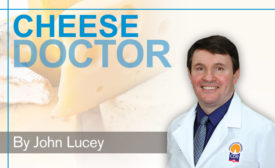Dairy Foods Columnists
Legislation under review in Pennsylvania could help the state dramatically reduce nitrogen runoff while reducing overall compliance costs.
Read More
A comprehensive environmental monitoring program can mitigate your recall risk
A comprehensive environmental monitoring program is the best ammunition in the fight against potential pathogen-related food recalls.
October 11, 2017
The evolving microbiology of cheese
New technology, like next-generation sequencing, is leading the way for a new generation of cheesemaking.
October 9, 2017
International Whey Conference highlights protein fortification opportunities
Whey protein remains the ‘gold standard’ for fueling muscle protein synthesis.
October 6, 2017
The marriage of dairy foods and clean labels
The key to achieving on-trend dairy products is the use of simple ingredients that have a purpose.
October 3, 2017
Use the right sweetener systems, stabilizers to avoid heat shock in gelato
We call the relatively high temperatures in a gelato cabinet the ‘danger zone.’ To mitigate heat shock, use the right sweetener systems and stabilizers.
September 11, 2017
Look abroad for ideas in fermented milk products
The French consumer eats four to five times the amount of yogurt as an American. Think of the sales volume impact if we can duplicate that level of consumption here at home.
September 8, 2017
Dairy is an optimum delivery system for probiotics
Clinical trials continue to document the benefits of probiotics. However, dairy products face growing competition from supplements and other food categories as a delivery vehicle for probiotics.
September 6, 2017
Competition demands a proactive trade policy
NAFTA is the vehicle the United States needs to ensure it export competitiveness.
September 5, 2017
Verifying the integrity of hygienic equipment design
Processors need to know that the policies and procedures they’re using are sufficient to guarantee the integrity of hygienic equipment design.
August 10, 2017
Stay ahead of the curve. Unlock a dose of cutting-edge insights.
Receive our premium content directly to your inbox.
SIGN-UP TODAYCopyright ©2025. All Rights Reserved BNP Media.
Design, CMS, Hosting & Web Development :: ePublishing














